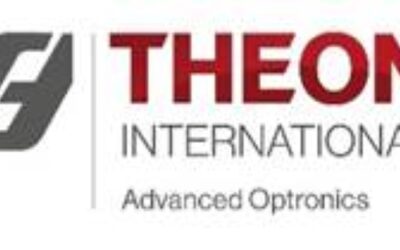DEFENCE
DEFENCE

The show “With Virtue and Courage” published a video from the visit in the state aircraft factory of the Hellenic Armed Forces. The factory is the centre of manufacturing for the Hellenic Air Force’s PEGASUS II unmanned aerial vehicle (UAV) and a repair hub for the French Sperwer UAV operated by the Hellenic Army.
These are important assets in conducting operational missions and, according to the report of the show, their number is increasing rapidly. The construction and repair of these UAVs has been undertaken entirely by the composite materials workshop, which reports to the Air Support Command in Elefsina.
The construction of a PEGASUS II UAV unit takes about 5 months and is done using mold and composite materials. After the necessary processing of the parts, PEGASUS II takes its final form.
In the first phase, the functional inspections of the electrical and electronic components of the aerial vehicle are carried out and then follows the inspection of their installation on PEGASUS II
Also read: LOTUS | Next generation UAVs from the Greek IDE for effective border surveillance
After the last tests and wiring control, the wiring is placed on the rudder and the final installation on the aircraft. This is followed by application control of all parts on the fuselage, with due care being given to the aircraft landing system.
In recent years, the workshop has also undertaken the repairs of Sperwer UAVs. The Sperwer is manufactured by the French company SAGEM. These UAVs can travel at altitudes above 16,000 feet for up to five hours. They can send target images up to 150 km away from their base.
The Sperwer has capabilities that allow it to be deployed in all war theaters:
- Catapult launch and parachute landing
- Range of action 200km with a direct link (LOS)
- 6-hour endurance
- Air-transportable with cargo aircraft
It features a highly flexible embedded equipment:
- Day/night gyrostabilized optronic sensor (EO / IR)
- Digital J band data link (15 GHz)
- Transporter / IFF mode 3C and VHF relay in ATC
- Direct transmission of images to the troops via an RVT terminal
On the other hand, the development of the Greek PEGASUS UAVs dates back to 1979 with its first flight taking place in 1982. PEGASUS II, the redesigned and upgraded model, entered service in 2005.
General features of PEGASUS II :
- Advanced electronic systems
- It is 4.3 meters long
- It features a 6.2-metre wingspan
- Take-off load of 250 kg.
- 15-hour autonomy
- It can carry a load of 50 kg.
The mission of PEGASUS II is:
- Surveillance.
- Intelligence gathering
- Targeting
- Damage / Disaster Assessment
Watch the report of the show “With Virtue and Courage” (14:40 for unmanned aerial vehicles).
Also read: Greece will manufacture advanced drones with “swarm” function
Israel | Receiving a Shipment of Hundreds of US MK-84 Heavy Bombs
A shipment of US MK-84 heavy bombs arrived in Israel overnight, the Israeli Defence Ministry announced today.
Greek-Indian Defence Cooperation | Greek UCAV SARISA SRS-2B as MV 1000 AMARAN in India
At the Aero India 2025 exhibition, Garuda Aerospace, one of the leading drone companies in India, showcased its latest…
ALTUS LSA | Alongside with the Lethal KERVEROS in Cyprus at BATTLEFIELD ReDEFiNED 2024
ALTUS LSA, the Greek innovator in Unmanned Aerial Vehicle technology, showcased its novel solutions at BATTLEFIELD REDEFINED 2024 in Cyprus.
Cyprus and Egypt | Double Agreement on Energy Fields
The Memorandum establishes the framework for the effective commercialisation of natural gas extracted from the field.
Intracom Defence | Extension of its Co-operation with DIEHL DEFENCE on the IRIS-T Missile System
Intracom Defence (IDE) announced a new contract award by Diehl Defence for the development of a new advanced medium-…
Turkey | Abdullah Öcalan is Working on a “Democratic Solution” for the Kurds
PKK founder Abdullah Öcalan is working on a “democratic solution” for the Kurds, a delegation of pro-Kurdish…
Defence Standardization Advice (DSA) | Participation in the NATO Use of Civil Standards Worksho
Defence Standardization Advice (DSA), a leading private company specialising in Defence and Security Standardisation Capacity…
Israel | Receiving a Shipment of Hundreds of US MK-84 Heavy Bombs
A shipment of US MK-84 heavy bombs arrived in Israel overnight, the Israeli Defence Ministry announced today.
THEON | Announcement of Interim Financial Results for 2024
THEON INTERNATIONAL PLC (THEON) has announced its interim results for the financial year 2024, demonstrating exceptional performance…




















0 Comments